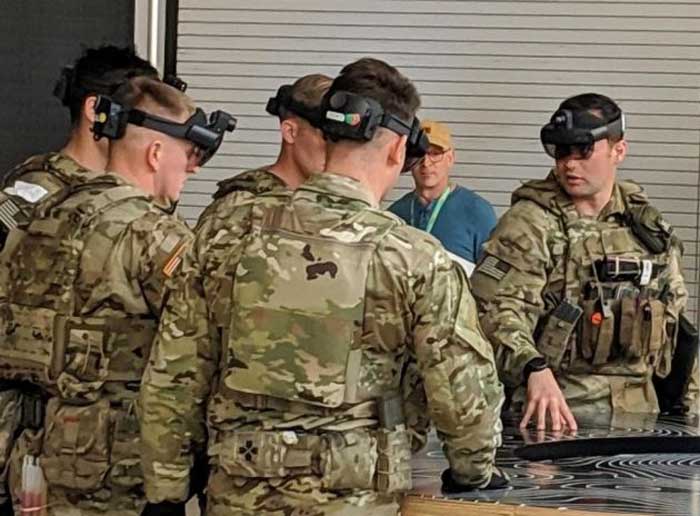A Look At Microsoft's HoloLens AR Headset For The US Military That Sparked Controversy
While virtual and augmented (VR and AR) reality hasn't taken off in the consumer space in a big way, its hardware and technologies are still being driven, but mostly with a focus on enterprise use as of late. Microsoft unveiled its HoloLens 2 augmented reality headset at MWC 2019 in February. The software giant was clear that the device wasn't aiming at the consumer market; rather it was more for enterprise customers. Later, word surfaced that Microsoft had won a contract with the U.S. military that would see the Army get a version of the HoloLens 2 for use on the battlefield, something that a small group of vocal Microsoft employees complained about, leaving Microsoft's CEO defending the contract.

Via U.S. Army
The headset that the U.S. Army will eventually get is called the IVAS, or Integrated Visual Augmentation System. CNBC was invited to try the headsets out, and while the publication wasn't allowed to photograph the headsets or soldiers using them, some stock images were offered by the Army, giving us a glimpse at what the final product might look like. The publication was allowed to try the headset out, and reportedly, the maps that are rendered over the environment for the soldier look like something out of a video game.

CNBC's Todd Haselton says that the content seen through the headset gave him a view of a map when he looked down that showed him a birds-eye view of the building he was standing in, he said it was similar to a satellite image you might find online. The image also had icons that represented his squad and when he moved his head the orientation of the arrow icon representing him changed direction.
Haselton says that the US Army noted in early testing that it learned soldiers could find the map distracting because it isn't see through when active. For that reason, the map also had a compass that could be seen by looking up. The compass marked different waypoints in degrees using icons on the compass. The entire experience felt natural, said Haselton, who says he has played first-person shooter games. You can bet soldiers who grew up on shooters will have the same experience and have familiarity with how to use it. IVAS headsets also support thermal imaging for use in dark environments.

Thermal imaging is used instead of night vision because smoke or fog can't block thermal vision. In another feature seemingly taken from video games, the headset will show a reticle for the weapon the soldier is using on the headset allowing them to fight with IVAS on. IVAS will also find use in training where the cameras offer debriefing from the soldiers view, so the instructors can see what the soldier was looking at. Interestingly, while Microsoft is the big name on the contract since it makes the headsets, there were 13 companies in total with contracts for the system for various sensors with another contracted company helping to make the 2D graphics into 3D images.

